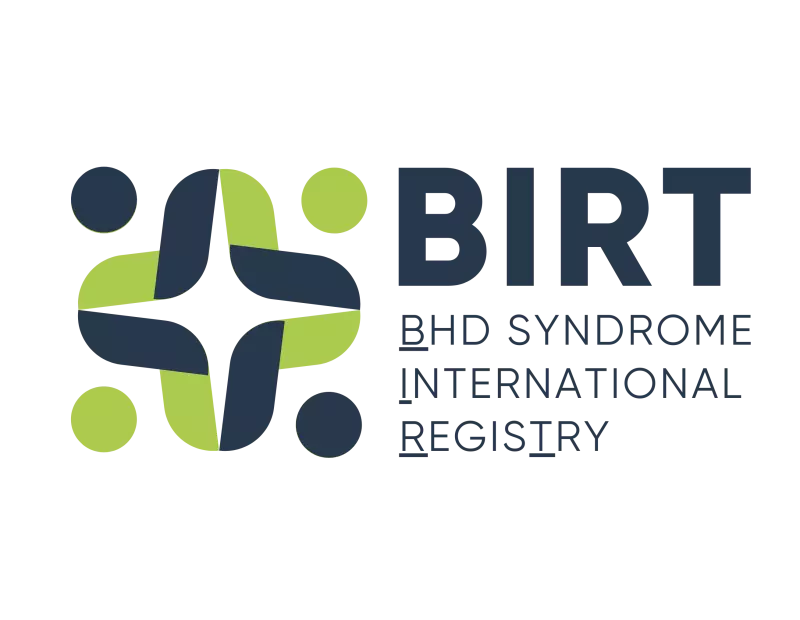What Tuberous Sclerosis Complex can teach us about BHD
8 Sep 2023
Tuberous sclerosis complex (TSC) is a rare inherited condition. It shares some features with Birt-Hogg-Dubé syndrome (BHD). TSC is a complex condition in which non-cancerous tumours called hamartomas can develop in different parts of the body. They most commonly appear in the brain, skin, heart and kidney. People with TSC can also get lung cysts and have collapsed lungs. Like BHD, the symptoms and severity of TSC can vary between people, even within the same family.
A recent paper reviewed the diagnosis and management of TSC. Here, we compare this with the current recommendations for BHD.
Diagnosis of TSC
There has been more research into TSC than BHD. Although they are different conditions, there is plenty that can be learned from TSC. Diagnostic criteria for TSC were first established in 1998. In 2012, they were updated and renewed based on a number of major and minor criteria. A definite diagnosis requires 2 major features or 1 major feature and at least 2 minor features. A mutation in either TSC1 or TSC2 is also sufficient for a diagnosis of TSC.
There are currently no official diagnostic criteria for BHD. However, different criteria have been proposed. A diagnosis of BHD relies on a combination of:
- clinical evaluation (looking at what symptoms a person may have)
- family history (if there is a family history of any of the symptoms of BHD)
- genetic testing (looking for a mutation in the gene folliculin, FLCN)
Early diagnosis in BHD is important to identify and treat any kidney cancer as quickly as possible.
The creation of diagnostic guidelines for BHD is a top concern for the BHD Foundation. Early diagnosis in BHD is important due to the risk of kidney cancer. Around 1 in 3 people with BHD will get kidney cancer. Everyone with BHD should get regular kidney scans to identify and treat any kidney cancer as quickly as possible. Understanding how other, similar conditions are diagnosed can help inform the best approach to create diagnostic criteria for BHD.
Management of TSC
Managing TSC is not straight-forward due to the wide range of symptoms a person may get. Like BHD, a team of different specialists is required for the best standard of a care. It is recommended that people with TSC get several types of scans and tests to check the function of key organs that may be affected. This includes skin and dental exams, scans of the brain, kidney and chest. These are performed at diagnosis and to monitor the condition. Below we look at the management of the three main symptoms of BHD and compare with how they are managed in TSC.
Management of the Kidneys
Tumours growing in the brain and kidney are the most serious complication of TSC. It is recommended that people get kidney scans every 1 -3 years. The kidney tumours in TSC are normally angiomyolipomas, (tumours that contain muscle, fat and blood vessels) which can be seen clearly on an ultrasound. These are different to the kind seen in BHD as they are not cancerous. They are often serious due to the risk of the tumours bursting and bleeding. However, people with TSC may still have an increased risk of getting kidney cancer.
In BHD, monitoring of the kidneys is also very important. However, how often people get scans, and the best type of scan is still up for debate. Some experts recommend a kidney scan every year while others recommend one every 3 years. Other experts say how often you get a kidney scan may depend on if you have any tumours or not. It is generally thought that an MRI scan is the best type of scan as it is very sensitive and can detect small tumours and does not emit any radiation. If an MRI is not available, a CT scan is recommended, however this does emit radiation.
Management of the Lungs
The lung involvement with TSC is known as lymphangioleiomyomatosis (LAM). Unlike BHD, the lung symptoms in LAM often get worse and affect the function of the lungs. It is therefore recommended that a CT scan of the lungs should be performed every 2-3 years. Tests to check lung function should be done every year.
In BHD, regular lung scans are not normally required. However, this may vary from person to person depending on your symptoms and lung function. Many people with BHD will have had a lung scan if they have had a collapsed lung. Other people may have a lung scan when they are diagnosed with BHD to check for lung cysts.
Management of the Skin
Skin symptoms are very common in TSC. These normally appear between the ages of 2 and 5 and increase in size and number. A detailed skin exam should be done at diagnosis and further exams should be done every year. A skin biopsy (where a sample is taken to check in a laboratory) is not normally required in TSC, although it may help diagnosis.
In BHD, a skin exam is often performed as this can help diagnosis. You may not need to see a skin specialist regularly unless you choose to have treatment to remove your skin bumps.
Treatment of TSC
TSC is caused by mutations in the genes TSC1 and TSC2. Like FLCN, these genes play a role in the mTOR pathway. Faulty TSC1 and TSC2 genes result in the mTOR pathway being constantly turned on. The mTOR pathway can be thought of as a master regulator of cell growth and survival. Having this pathway constantly turned on can lead to the growth of tumours and/or cancer. Drugs called sirolimus and everolimus can turn this pathway off by blocking a key protein in the pathway called mTORC1. These drugs have been approved to treat certain symptoms of TSC including brain and kidney tumours. Sirolimus can also be used to treat moderate to severe LAM and for a type of skin bump called angiofibroma.
There have been 2 previous clinical trials looking at mTORC1 inhibitors to treat BHD. The first one studied the effect of using a topical treatment (something that can be applied directly to the skin) to treat fibrofolliculomas. It was found that this was not an effective treatment. The second trial examined the use of everolimus for BHD-associated kidney cancer. This trial was stopped due to a low participation rate.
Future Research
Although there are drugs to treat some of the symptoms of TSC, more work needs to be done. How to choose the best drug and dose, who, what and when to treat are important questions. It has also been shown that many of the symptoms of TSC can return when a person stops the drug they are taking. Therefore, the long-term side effects of taking a drug need to be considered. Work is also being done to develop new treatments for TSC. This includes better, safer mTORC1 inhibitors as well as new approaches such as gene therapy.
There are no drugs approved to treat BHD. Research into developing new treatments, including gene therapy for BHD, is a top priority for the BHD Foundation and Myrovlytis Trust (who manage the BHD Foundation). The guidance on diagnosis, management and indication for treatment in TSC has been partly shaped by the TuberOus SClerosis registry to increase disease Awareness (TOSCA) registry. This international registry recruited over 2000 people with TSC and recorded information including symptoms, treatments and outcomes over 5 years. Earlier this year, we launched the BHD Syndrome International Registry. With this, we aim to put people with BHD at the centre of research, and drive it forward to find new treatments or even a cure for BHD. However, we need as many people to take part as possible to get meaningful results that can truly impact the BHD community.

